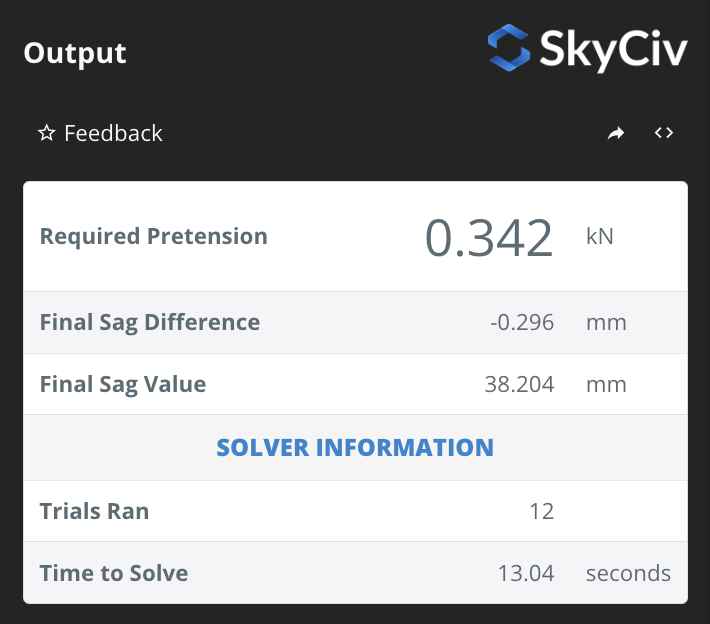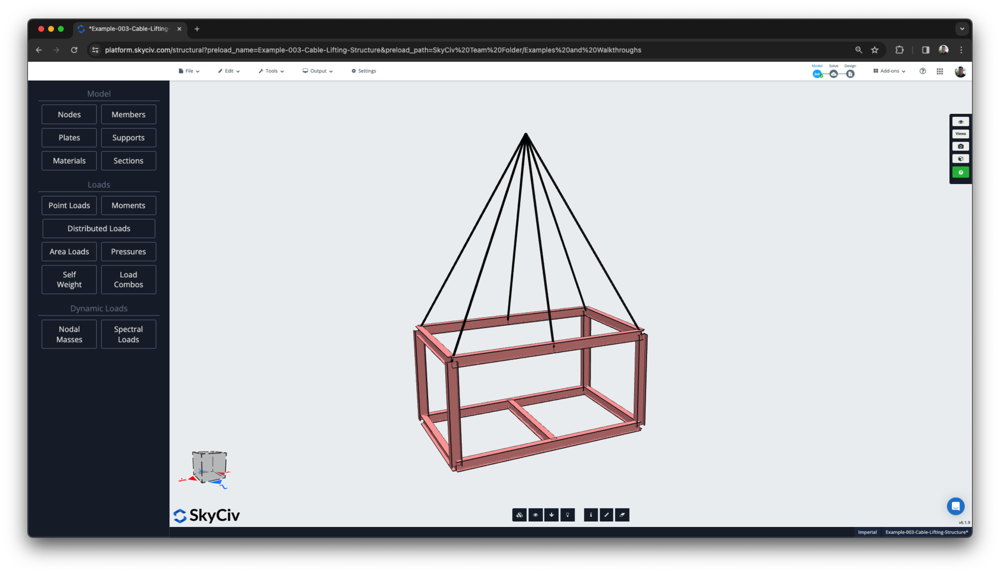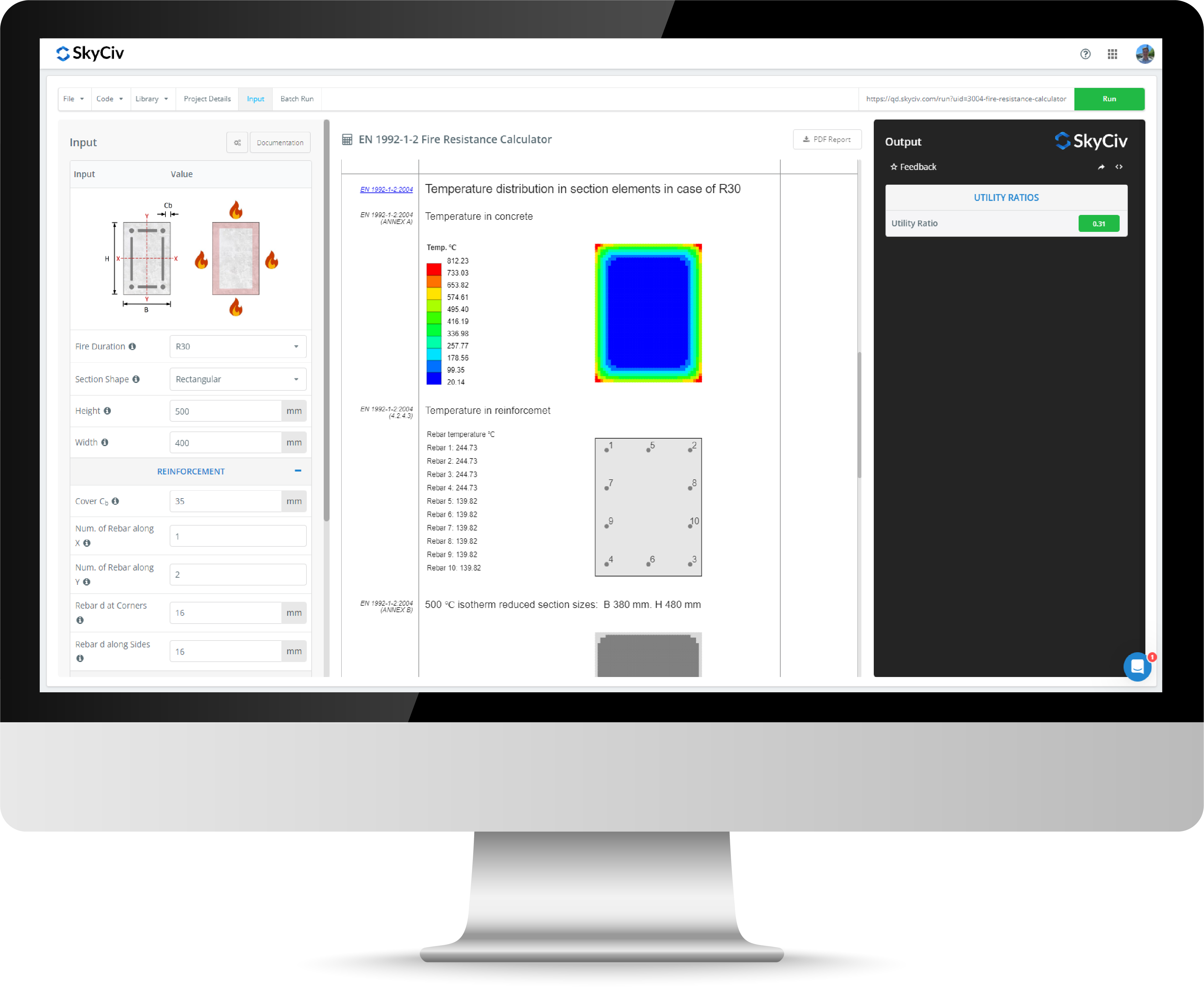Cable Sag Calculator
The SkyCiv Cable Sag Calculator (or Cable Deflection Calculator) helps you to determine the prestress forces required to reach a certain cable sag given a particular cable setup. This calculator uses SkyCiv's powerful FEA technology to iteratively work through different prestress forces to determine the required force for a particular sag or cable deflection.
Final cable sag and required pretension is calculated on the following inputs:
- Cable Length (m)
- Cable Diameter (mm)
- Target Cable Sag (mm) - the desired cable sag you are iterating for
- Material Properties - such as density of the steel and Young's Modulus
- Iteration Settings - decimal places or accuracy when iterating to solve
The below cable sag calculations are based on iterating between different prestress loads to calculate the desired cable sag.
A Guide on Cable Deflection or Cable Sag
What is Cable Sag?
Cable sag is the amount of deflection a cable experiences under it's self weight and any prestress loads in the cable. The weight of the cable will cause a vertical sag:

However, this sag can be offset by introducing a tension force in the cable, also known as a prestress load:

Cable Sag Equation
The above calculator will iterate between increasing/decreasing the amount of prestress in the cable to try and calculate the Target Cable Sag. The calculator uses SkyCiv's FEA solver to accurately calculate these values for a more accurate design. However, simple calculations can also be made to calculate the deflection of a cable using a simple cable deflection equations:
Sag = (w * (L/2)²) / (2 * T)
where;
w = weight of cable in N/m
L = Length of Cable
T = Applied tension force on cable
Example of how to calculate the sag in a cable
Q: Consider we have a cable of length L=10m, suspended between two supports at the same height. The cable has a uniform weight 𝑤 =0.154 kg/m, and it is prestressed with a horizontal tension 𝑇 = 500N.
1. Determine the weight per unit length in Newtons:
Weight per unit length: 0.154 kg/m * 9.81 m/s² = 1.54 N/m
2. Use the parabolic approximation for sag:
The sag (y) at the midpoint of the span (x = L/2) can be calculated using the formula:
y = (w * (L/2)²) / (2 * T)
y =(1.54 N/m * (5m)²) / (2 * 500 N)
y ≈ 0.0385 m = 38.5mm
Comparing FEA Cable Sag Calculations to Cable Sag Formula
Comparing to the result of our calculator, using the same input, we can see we get to a similar result. In the calculator, a 342N force resulted in a net sag of 38.2mm, however in the simplified formula we get a 500N force to achieve a similar 38.5mm sag. The above cable deflection calculator uses Finite Element Analysis to calculate the result, which is much more accurate as it performs a non-linear analysis rather than relying on simplified empirical formula like the above example.

The results are clearly similar and within a reasonable range, but it is highly recommended to use a more advanced tool in the case of structural design.
Why do we need to calculate the sag in a cable?
Cable sag is an important part of the design and installation of any cable system. For design, it's important to ensure clearance and manage the load on supporting structures. For instance, in power lines, an engineer may need to make sure there is enough clearance from the ground for safety reasons. Additionally, they will also need to know how much additional load this will apply to the pole.
Other cases include bridges (particularly suspended bridges) and catenary systems in railway structures - where the overhead wire system will need to be supported at a given sag.
The sag of a cable is also necessary during the installation stage. It is important for the installer to know the correct amount of tension that needs to be applied to a cable to get a given sag. This will also need to account for environmental factors such as temperature changes, wind loads that might cause effects on the supporting structure and hence cable, and any ice loads that might apply to the cable.
Other Calculators
About SkyCiv
As well as this cable tension calculator SkyCiv offers a wide range of Cloud Structural Analysis and Design Software for engineers. As a constantly evolving tech company, we're committed to innovating and challenging existing workflows to save engineers time in their work processes and designs.
FAQ?
What if I need to calculate more complex cable systems?
SkyCiv has a fully-features structural analysis software called SkyCiv Structural 3D, which supports catenary cable analysis. These are structural elements that are non-linear and tension only with large displacements. They have zero capacity for flexural or shear forces, but capable of carrying load in tension.
You can model and solve pretty much any cable system in 3D, as we are running a full FEA on the system, whereas this calculator runs more of a simple case analysis. Here is an example of a cable structure in SkyCiv Structural 3D. Learn more at Cables in SkyCiv Structural 3D.




